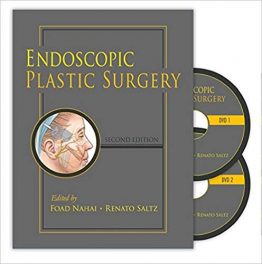 Authors: Denise F. Polit, PhD, FAAN and Cheryl Tatano Beck, DNSc, CNM, FAAN
Authors: Denise F. Polit, PhD, FAAN and Cheryl Tatano Beck, DNSc, CNM, FAAN
Publisher: Wolters Kluwer | Lippincott Williams & Wilkins – 802 pages
Book Review by: Nano Khilnani
The first edition of this book was published some 35 years ago in 1978. It has become a classic in nursing. It has undergone numerous improvements over the years. This ninth and latest edition has many of the popular features of previous editions and some new ones which we name below.
The authors are both professors of nursing. Denise F. Polit is a professor of nursing at the Griffith University School of Nursing in Gold Coast, Australia.
Cheryl Tatano Beck is a distinguished professor in the School of Nursing at the University of Connecticut in Starrs, Connecticut.
In terms of features, this book provides a whole lot of value to students and instructors. With an extensive amount of information on 800+ pages spread over 29 chapters organized into six parts, it boasts a 27-page glossary of terms used in nursing practice, and 6-page Appendix with statistical tables.
It also has 19 pages of methodologic and non-research references, a 30-page Index and a special one-page glossary of selected statistical symbols. Some 25 reviewers looked at this work before it went to print to provide a book with high quality production standards as well as editorial excellence.
This latest edition provides in earlier chapters a blend of qualitative and quantitative research findings. But it devotes the whole of Part III to quantitative research material and the next section – Part IV – to methods of qualitative inquiry.
Two chapters, 25 and 26 on mixed methods research – which is integration of qualitative and quantitative data in a single inquiry – have been added to this edition. Innovations in research methodology in nursing, medicine and the social sciences over the last four to five years have also been incorporated in this latest version of the popular text.
Some of these new additions include:
- Advances in dealing with the problem of missing data
- A revised model for developing and testing interventions
- New approaches to systematic reviews
- New and updated guidelines for reporting research in journals
- New guidelines for obtaining research funding from National Institutes of Health
- New models of generalizability (what can and what cannot be generalized)
- Technological advances in data collection
The authors write that this textbook was designed to help those who are learning to do research and those who are learning to appraise research efforts critically, and to use research findings in practice.
The material contained in 29 chapters of this book has this basic outline as defined by its six parts:
- Foundations of Nursing Research and Evidence-Based Practice
- Conceptualizing and Planning a Study to Generate Evidence
- Designing and Conducting Quantitative Studies to Generate Evidence
- Designing and Conducting Qualitative Studies to Generate Evidence
- Designing and Conducting Mixed Methods to Generate Evidence
- Building an Evidence Base for Nursing Practice
The organization of material in each chapter is superb. The chapters begin with a brief all-caps heading with the words Background, Introduction, Perspective, in the title in which subject matter information is presented, followed by topics of discussion within that subject matter in upper and lower case headings.
Then a second subject matter is presented with all-caps titles, again followed by topics with discussions. A lot of boxes, charts, highlighted blocks of text, tables and the like are presented as study and information-retention aids.
At the end of each chapter, the following features are presented:
- Research Examples, with Problem Statement, Purpose, Research Question, Hypothesis, Study Method, and Key Findings
- Summary Points, with definitions of key words used in research studies
- Study Activities, with assignments
- Studies Cited in the Chapter, with names of authors and titles of their work.
This is a well-planned, well-researched, well-organized and well-written volume by the two authors, which constitutes their valuable and significant contribution to nursing education and dissemination of knowledge and research.
A package of materials called the Resource Manual is available to students and instructors. It contains exercises that correspond to each text chapter. The Appendix in it has 12 research journal articles, with full critiques on two of them.
The Toolkit to the Resource Manual is also a must have for readers of this book. It is a CD-ROM based product that contains numerous research resources written in Microsoft Word that can be downloaded or used directly.
Purchasers of this book can access: a full text of this volume, glossary, journal articles, Power Point presentations with images, statistical tables and websites.







